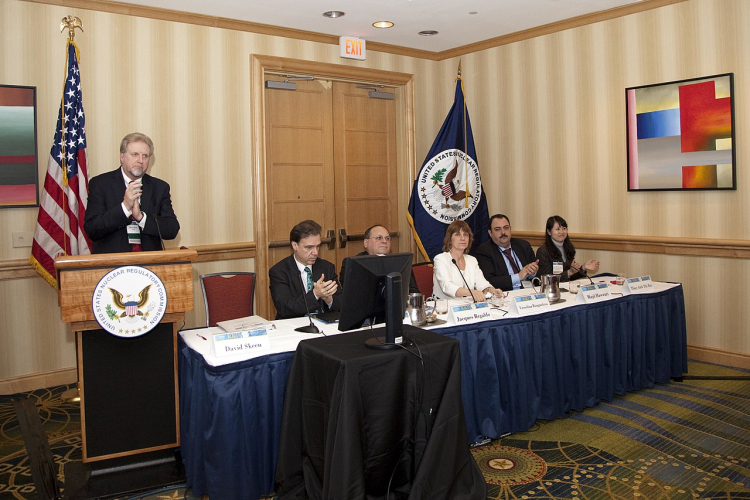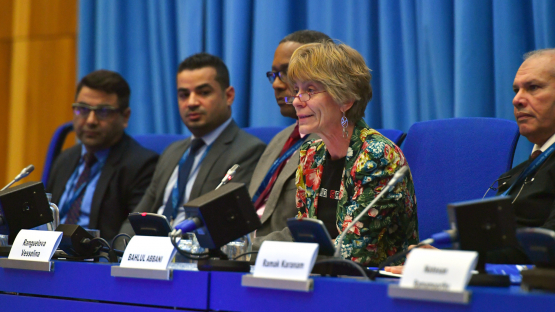
Ranguelova, the only woman to have led operational safety missions of the IAEA to date, presenting the lessons learned from such missions at a conference in the United States in 2015. (Photo: U.S. Nuclear Regulatory Commission)
Ranguelova’s dynamism and passion for nuclear safety is well-recognized by her co-workers. “No matter the subject, Vesselina is instantly enthusiastic and energized. Her passion for nuclear safety is contagious, and that’s the trademark of her leadership,” said Greg Rzentkowski, her boss as Director of the Division of Nuclear Installation Safety.
The nuclear industry is still largely dominated by men, so there are not many women in leading positions in nuclear safety. Ranguelova is a trailblazer in this respect at the IAEA as well —being the only woman to have led an OSART Mission – she has led more than 10 of the around 200 missions that have been conducted. She has led missions to Canada, China, France, Finland, Russia, the UK and the US.
“Leading an OSART mission is an achievement I am particularly proud of, because it demonstrated that women and men can equally do a good job in this role,” she says adding that, “this was also a feat because during such missions we, as a team, identified several opportunities for Member States to improve the operational safety of the nuclear power plants we visited, and the recognition received for this work has been rewarding.”
At the IAEA, she manages a section of 18 staff, and she highlighted the close bonds she has established within her team. “I find great pleasure in guiding and motivating my staff. I am inspired by their competence and enthusiasm. We have excellent technical debates and we deliver well as a team. Working with them has been a privilege.”
She illustrated the importance of teamwork by highlighting the role of a task force led by her section’s experts to assess the applicability of the IAEA’s safety standards to small modular reactors — a new type of advanced reactor that produces electricity of up to 300 MW(e) per module and offers the possibility to combine nuclear energy with alternative energy sources. This initiative involves 50 experts from across the IAEA and 150 specialists from around the world: regulatory authorities, designers, operators and vendors. It was initiated in mid-2020 due to the heightened interest among several countries to deploy small modular reactors for the first time. Based on the findings, the IAEA will release a report by the end of 2021 that will help to define the Agency’s future work regarding the specific gaps to be addressed to ensure the robust safety of such innovative technologies, she said.
“I am honoured to have been able to contribute to strengthening nuclear safety in Bulgaria, the EU and the world,” she says. “I look forward to increasing my impact and working with many excellent professionals in this field.”










